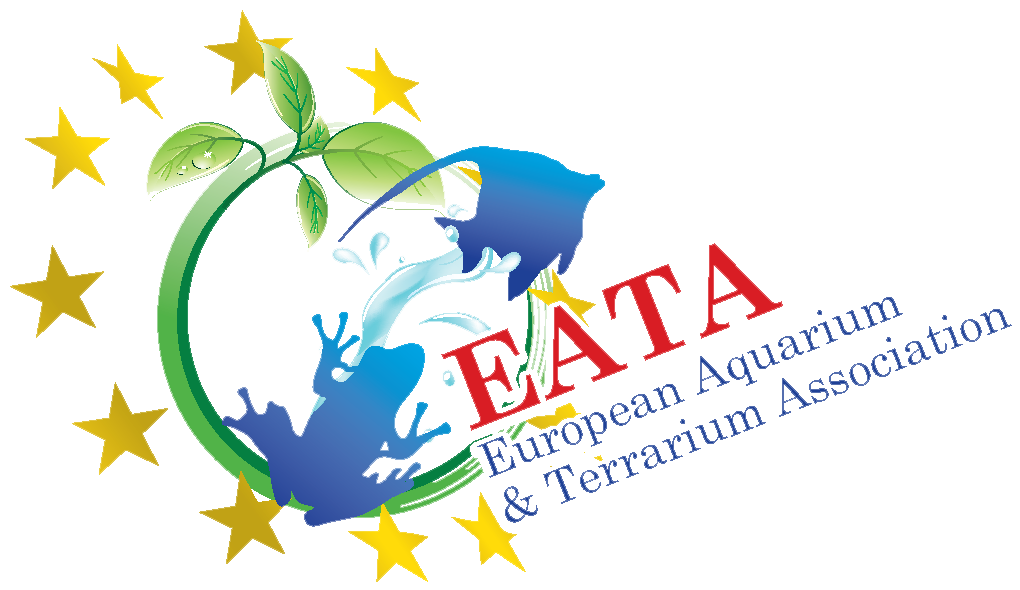 Deutsch
Deutsch English
English Čeština
Čeština Nederlands
Nederlands Français
Français
Projects Terraristic
Citizen Conservation - conservation breeding against loss of species
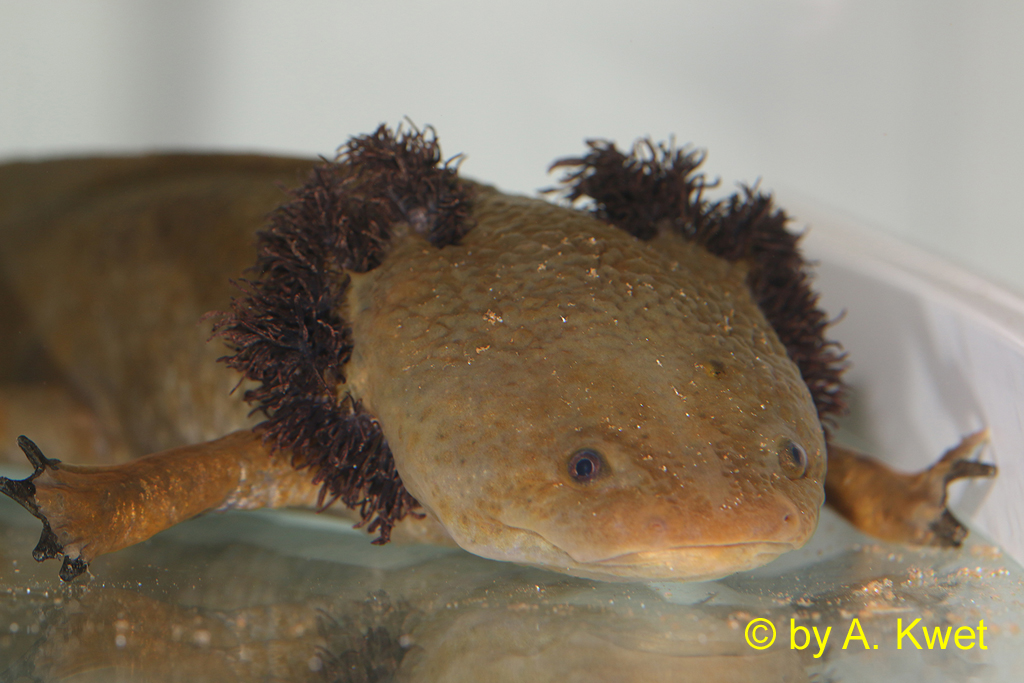 © by A. Kwet biodiversity crisis. In the short and medium term, many species will only have a chance of survival if they are in human care. Zoos cannot do the job alone; their capacity as a global ark of biodiversity is not sufficient to solve this task for society as a whole.
© by A. Kwet biodiversity crisis. In the short and medium term, many species will only have a chance of survival if they are in human care. Zoos cannot do the job alone; their capacity as a global ark of biodiversity is not sufficient to solve this task for society as a whole.Many amphibian and reptile species already owe their existence to the commitment of individuals. The know-how and knowledge of private breeders, but also the spatial capacities to obtain necessary backup populations, have so far hardly been used to set up a coordinated maintenance breeding program. Citizen Conservation, a joint project of Frogs and Friends, the DGHT and the VdZ (Association of Zoological Gardens), focuses on people who care for the endangered species professionally and privately. Attitude saves species; building healthy populations in human care is an essential tool in the fight against the species' exodus. The involvement of committed private owners in Citizen Conservation Amphibians can help to obtain a relevant number of amphibian species in the required population size in the future. Animal gardeners, scientists and citizens network to fight together against species extinction.
Fact sheets on captive reproduction in endangered species of amphibians and reptiles I
In each meeting of the Conference of the Parties CITES even more species of amphibians and reptiles will be listed on appendix I or II of the convention. This means increased paperwork for ex- and importers,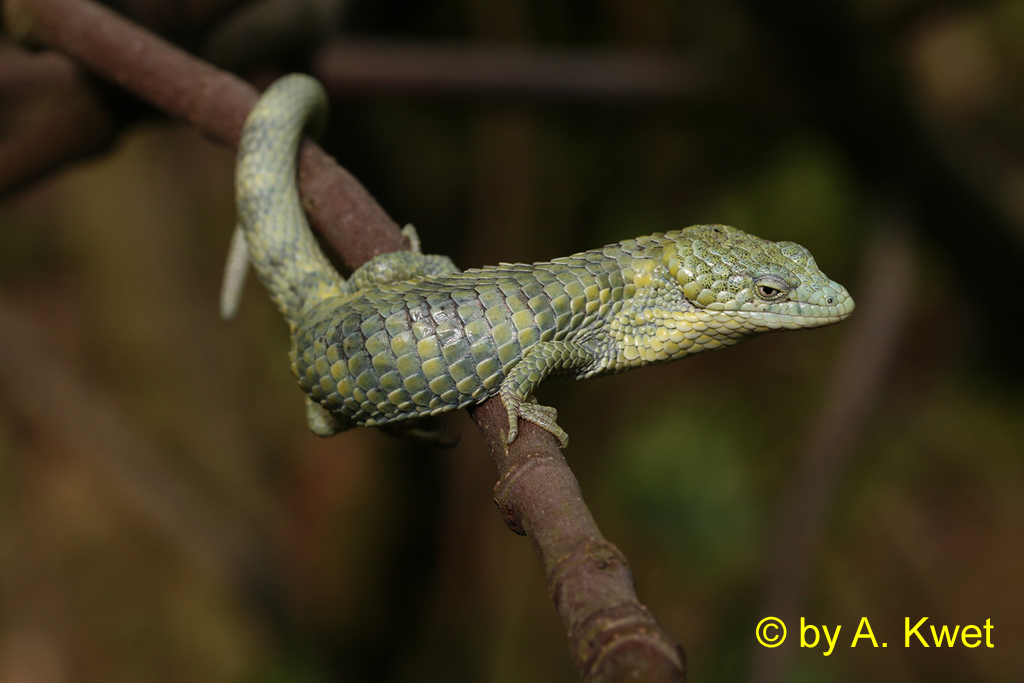 and obtaining more expert reports for the trade with wild-caught specimens. When reading the CITES trade database https://trade.cites.org/ it is noticeable that the proportion of specimens which a source declaration as "captive produced" (captive bred or farmed or even ranched) is increasing, because this labelling means less restrictive documentation obligations. Validation of the respective source specifications is challenging, if the relevant information on the biology is scarce, and the good husbandry practices and breeding experiences for these species are not summarized for easy access.
and obtaining more expert reports for the trade with wild-caught specimens. When reading the CITES trade database https://trade.cites.org/ it is noticeable that the proportion of specimens which a source declaration as "captive produced" (captive bred or farmed or even ranched) is increasing, because this labelling means less restrictive documentation obligations. Validation of the respective source specifications is challenging, if the relevant information on the biology is scarce, and the good husbandry practices and breeding experiences for these species are not summarized for easy access.
The DGHT has just started to produce fact sheets with these data on the amphibian and reptile species on the CITES appendices, and is compiling not only published data from the different sources, but also the member's expertise on natural history as well as captive husbandry and breeding of these species. We will inform on the progress of this project on our homepage www.dght.de.
https://www.dght.de/cites-steckbriefe
Fact sheets on captive reproduction in endangered species of amphibians and reptiles II
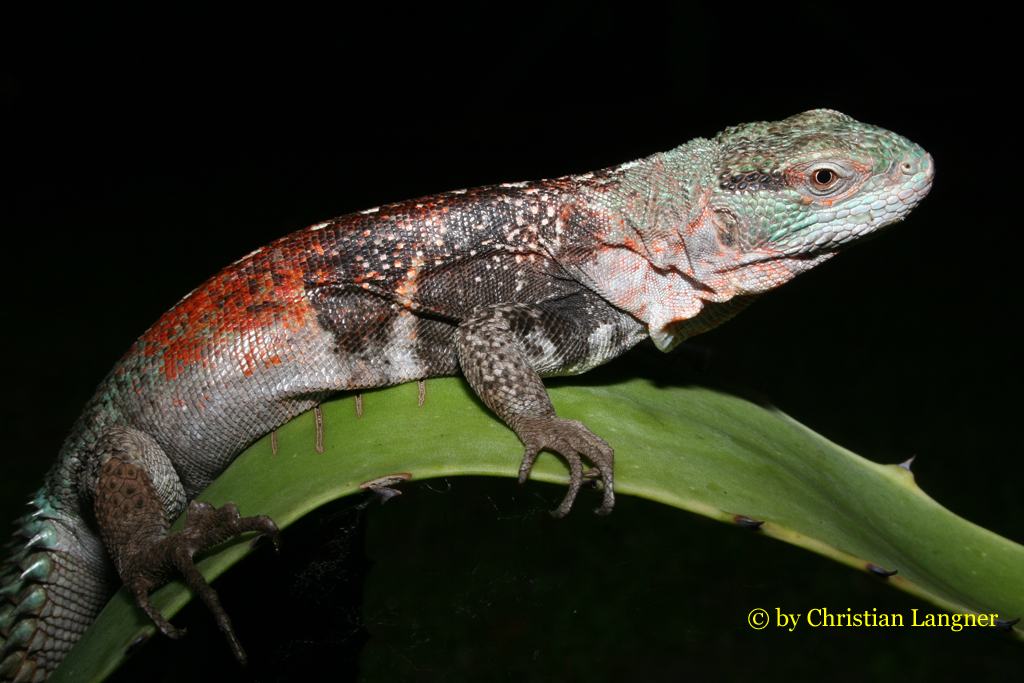 After the successful completion of the CITES Breedability Profiles I, the DGHT pilot project described above for assessing the breedability of all reptile species that were newly or higher listed in Annexes I and II at the 17th CITES Conference of the Parties (CITES Cop17) in Johannesburg in 2016, the BfN commissioned a follow-up project for the period 2020/2021. The aim is to better assess the breeding ability of other reptile and amphibian taxa that were newly and / or higher listed at the last CITES CoP18 (2019 in Geneva) in CITES Appendices I and II. There are a total of 89 other species of amphibians and reptiles (43 lizards / snakes, 41 tailed amphibians, 5 turtles), whose breeding ability is recorded through targeted surveys of private owners and zoos as well as through literature work in the form of profiles and made available to authorities for plausibility checks.
After the successful completion of the CITES Breedability Profiles I, the DGHT pilot project described above for assessing the breedability of all reptile species that were newly or higher listed in Annexes I and II at the 17th CITES Conference of the Parties (CITES Cop17) in Johannesburg in 2016, the BfN commissioned a follow-up project for the period 2020/2021. The aim is to better assess the breeding ability of other reptile and amphibian taxa that were newly and / or higher listed at the last CITES CoP18 (2019 in Geneva) in CITES Appendices I and II. There are a total of 89 other species of amphibians and reptiles (43 lizards / snakes, 41 tailed amphibians, 5 turtles), whose breeding ability is recorded through targeted surveys of private owners and zoos as well as through literature work in the form of profiles and made available to authorities for plausibility checks.
https://www.dght.de/cites-steckbriefe
FOGS - Development of new genetic analysis tools for assigning the origin of rare and threatened reptiles and amphibians
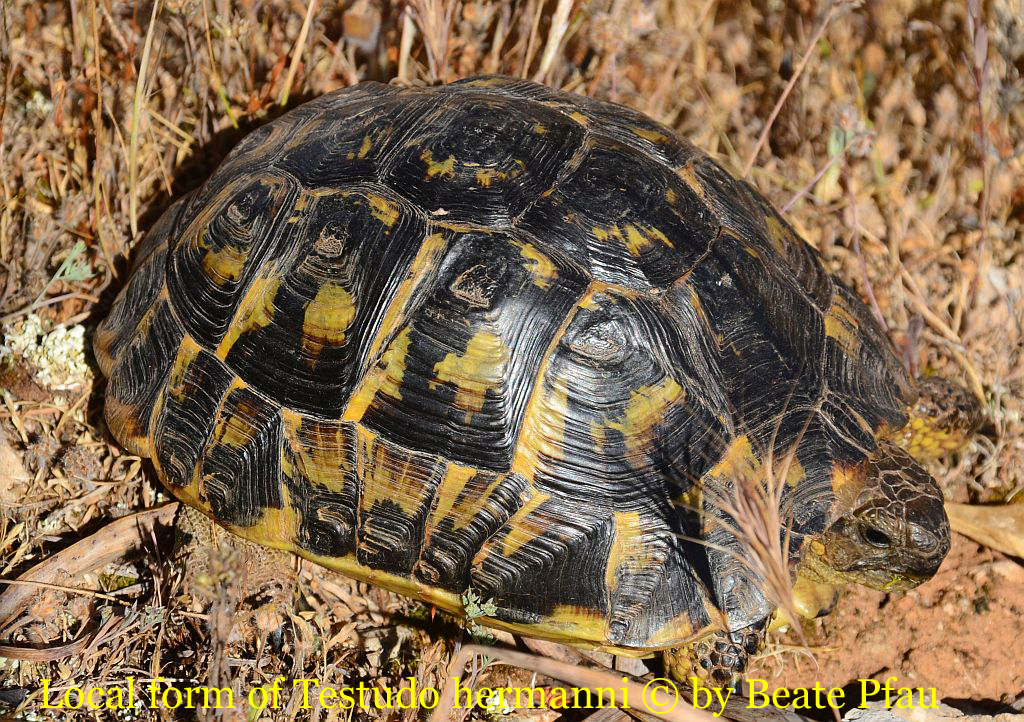 When breeding animals for species conservation, it is of great importance to manage the ex situ population according to genetic criteria so that the animal species can be preserved in a stable manner and, if necessary, offspring suitable for outdoor use can be made available for reintroduction campaigns. In the case of amphibians and reptiles, the origin of a certain population and also the relationship of the animals in a breeding group can only be determined with very precise genetic analysis tools due to the special features of reproduction. The markers available to date that were used for the corresponding analyzes in birds and mammals were not yet sufficient for this.
When breeding animals for species conservation, it is of great importance to manage the ex situ population according to genetic criteria so that the animal species can be preserved in a stable manner and, if necessary, offspring suitable for outdoor use can be made available for reintroduction campaigns. In the case of amphibians and reptiles, the origin of a certain population and also the relationship of the animals in a breeding group can only be determined with very precise genetic analysis tools due to the special features of reproduction. The markers available to date that were used for the corresponding analyzes in birds and mammals were not yet sufficient for this.
The DGHT therefore supports the FOGS (Forensic Genetics for Species Protection) project, which deals with the reliable assignment of the origin of protected animal species. For this purpose, some European amphibians and reptile species or local forms were selected, which are kept and bred by DGHT members or researched in the field. The novel STRSNP markers, which are being developed in FOGS for genetic analyzes, are to be tested for accuracy with the help of samples collected by the keepers and breeders of these species.
One of the species for which such a marker is being developed is the Greek tortoise (Testudo hermanni), of which there are some breeding groups of really rare and already severely endangered local forms within Europe and which appear again and again in the trade. With the help of the analyzes, the composition of the breeding groups should be checked and, if necessary, animals from the trade should be conveyed to suitable breeding groups so that genetically suitable and fit young animals are really available in the event of reintroduction, if the original biotopes are restored (and protected).
https://www.zfmk.de/de/forschung/projekte/fogs-forensic-genetics-for-species-protection#info
Captive breeding of rare turtles and tortoises
Members of the German Society for Herpetology and Herpetoculture (DGHT) are breeding rare species of turtles and tortoises. They coordinate their activities and take care to establish stable ex situ populations, which are distributed among the zoos and breeders within Europe. 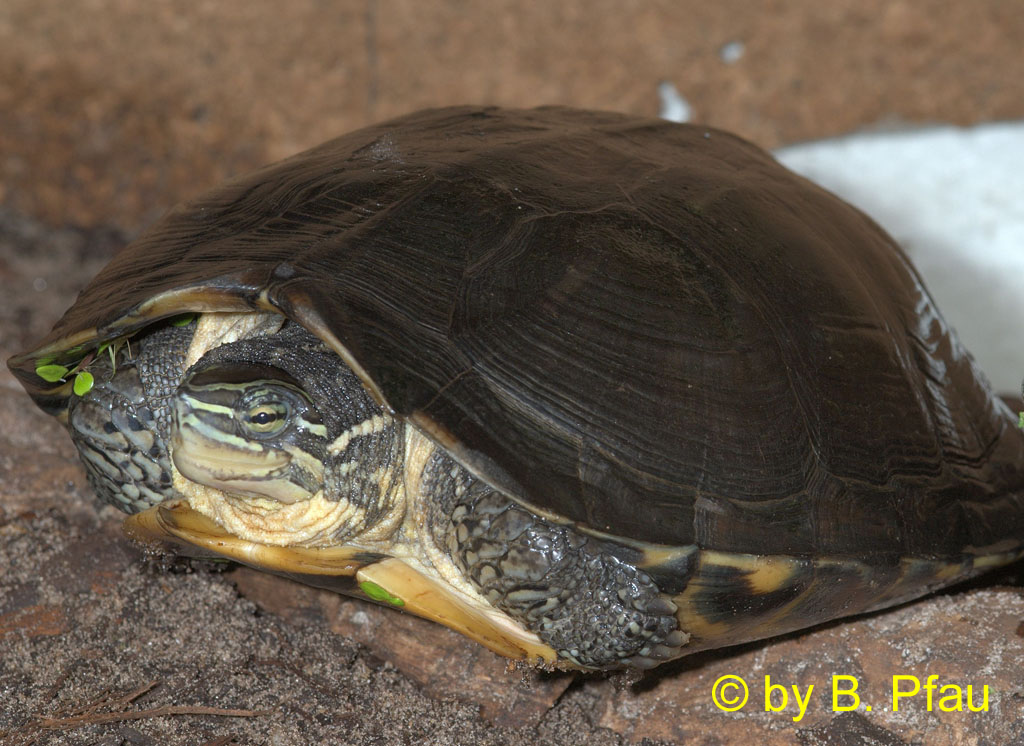 The most famous of these captive breeding projects is located in the International Center for Turtle Conservation (IZS) within the zoological garden of Münster, where for example some nearly extinct Cuora species are reproducing. Even of the species which are being bred here, there are more breeding groups owned by private breeders who exchange experiences and, if necessary, also animals with the IZS. Some of the offspring from captive breeding these rare species are being brought back to their countries of origin to be reintroduced in the wild by experienced nature conservation organizations. For other species or species groups, for example the small tortoises of Madagascar, or the Sawback turtles of the southern US states, there is also an information and animal exchange of private breeders within the DGHT and with the scientists and nature conservancy organisations in the species' natural range. The experiences on captive breeding of rare chelonians are being published in different publications of the DGHT: https://www.dght.de/publikationen and especially in the Radiata, which is the journal of the German Chelonia Group within the DGHT https://schildkroeten.dght.de/wer-sind-wir.html. For further information, please contact us.
The most famous of these captive breeding projects is located in the International Center for Turtle Conservation (IZS) within the zoological garden of Münster, where for example some nearly extinct Cuora species are reproducing. Even of the species which are being bred here, there are more breeding groups owned by private breeders who exchange experiences and, if necessary, also animals with the IZS. Some of the offspring from captive breeding these rare species are being brought back to their countries of origin to be reintroduced in the wild by experienced nature conservation organizations. For other species or species groups, for example the small tortoises of Madagascar, or the Sawback turtles of the southern US states, there is also an information and animal exchange of private breeders within the DGHT and with the scientists and nature conservancy organisations in the species' natural range. The experiences on captive breeding of rare chelonians are being published in different publications of the DGHT: https://www.dght.de/publikationen and especially in the Radiata, which is the journal of the German Chelonia Group within the DGHT https://schildkroeten.dght.de/wer-sind-wir.html. For further information, please contact us.
Differentiation of captive-produced and wild-caught turtles and tortoises
There is an increasing number import shipments of rare turtles and tortoises into Europe, and the custom officers and inspection officials are challenged to identify any misuse of source codes. To support them, Species360 has 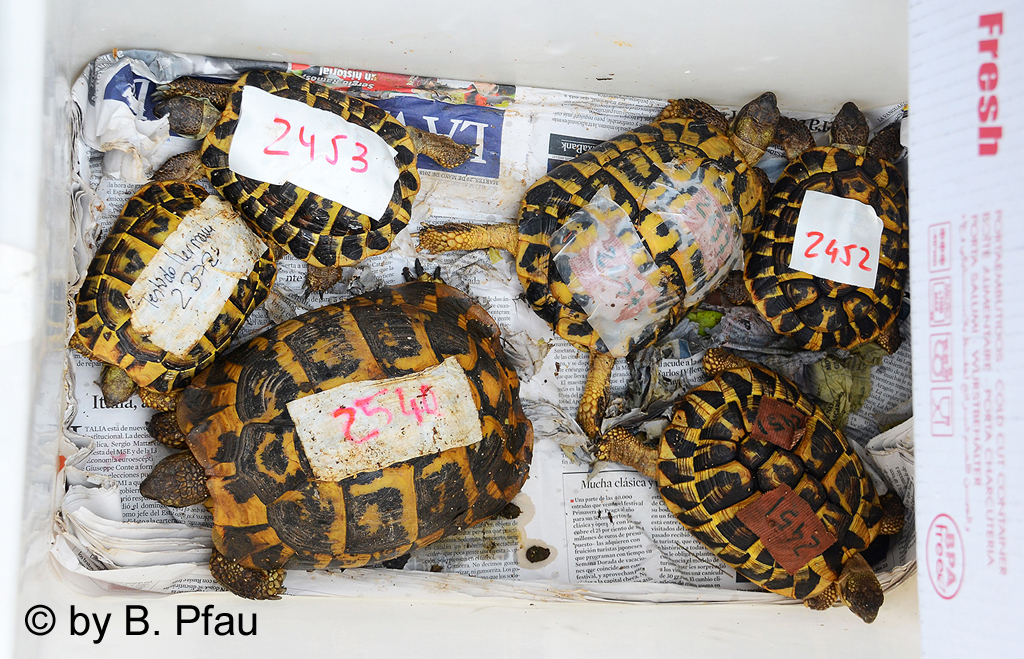 produced the "Manual for the differentiation of captive-produced and wild-caught turtles and tortoises (Testudines)". The aim of this manual is therefore to provide guidance for inspection officials and customs officers, and CITES Management and Scientific Authorities, to aid in the identification of potential misuse of the source declaration as "from captive propagation". The DGHT was involved in the development of the criteria to determine wild-caught versus captive-produced origin when opening a shipment, by aggregating the member's experiences with shipments of turtles and tortoises. The manual is written in rather simple language for non-biologists, and describes, for example, the typical behavior of turtles which are well adapted to captivity and will often beg for food, and the typical behavior of recently wild caught animals, which will usually retract into their shells and often remain hidden for a long time. Another criterion might be the minor flaws of captive grown tortoises, or the scars from typical injuries that have been inflicted on them in the wild. There is an inspection key, and in total we found eight main criteria for the first impressions of a shipment with chelonians declared at "from captive production" which we also compiled in an illustrated guide in the next chapter. The manual also contains a summary of advanced methods, which could be used to determine wild-caught versus captive-produced origin of chelonians. The manual can be found on the CITES internet page (www.cites.org), and for further information please contact us directly https://www.dght.de/die-dght.
produced the "Manual for the differentiation of captive-produced and wild-caught turtles and tortoises (Testudines)". The aim of this manual is therefore to provide guidance for inspection officials and customs officers, and CITES Management and Scientific Authorities, to aid in the identification of potential misuse of the source declaration as "from captive propagation". The DGHT was involved in the development of the criteria to determine wild-caught versus captive-produced origin when opening a shipment, by aggregating the member's experiences with shipments of turtles and tortoises. The manual is written in rather simple language for non-biologists, and describes, for example, the typical behavior of turtles which are well adapted to captivity and will often beg for food, and the typical behavior of recently wild caught animals, which will usually retract into their shells and often remain hidden for a long time. Another criterion might be the minor flaws of captive grown tortoises, or the scars from typical injuries that have been inflicted on them in the wild. There is an inspection key, and in total we found eight main criteria for the first impressions of a shipment with chelonians declared at "from captive production" which we also compiled in an illustrated guide in the next chapter. The manual also contains a summary of advanced methods, which could be used to determine wild-caught versus captive-produced origin of chelonians. The manual can be found on the CITES internet page (www.cites.org), and for further information please contact us directly https://www.dght.de/die-dght.
Testudines market chain project
The number of postings on the legal and illegal trade with protected species of turtles and tortoises within the social media and the news portals is increasing. An analysis of the CITES trade database shows a marked increase of the live animal trade with captive produced animals, and in some sensational publications 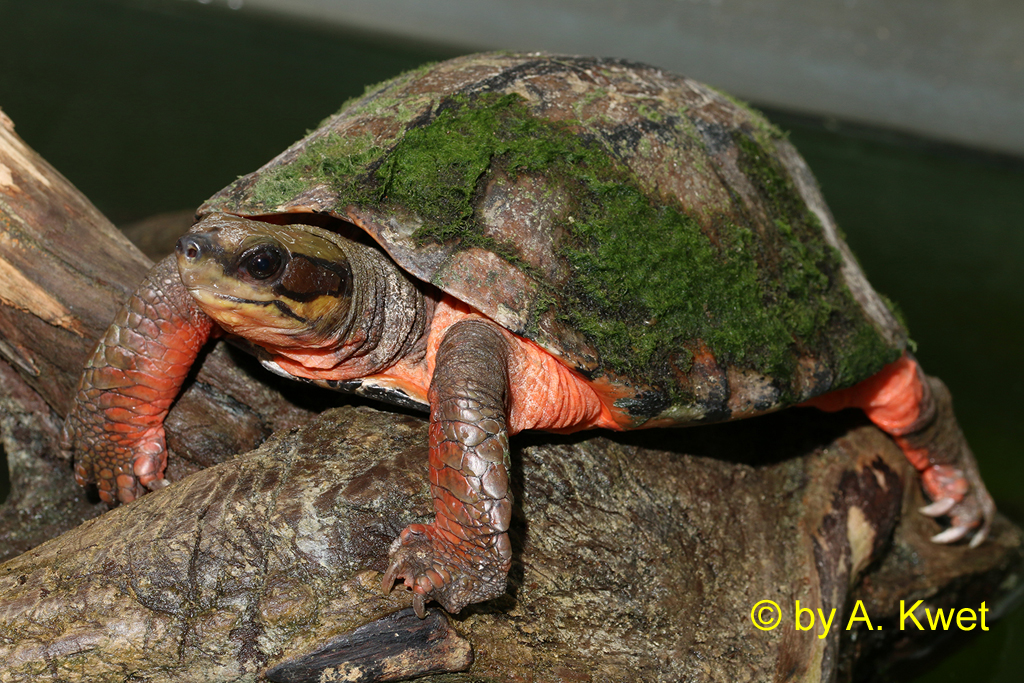 it is assumed that all these shipments are labelled incorrectly and all the owners of these animals are in fact poachers. Therefore, the trade chain for these animals needs reasonable, factual elucidation. Species360 is going to analyze all the steps in the trade chain for turtles from southeast Asia, and estimate the investments and revenues of each step, and then rate the economic feasibility of breeding and trading really captive bred specimens of a particular species.
it is assumed that all these shipments are labelled incorrectly and all the owners of these animals are in fact poachers. Therefore, the trade chain for these animals needs reasonable, factual elucidation. Species360 is going to analyze all the steps in the trade chain for turtles from southeast Asia, and estimate the investments and revenues of each step, and then rate the economic feasibility of breeding and trading really captive bred specimens of a particular species.
About ten priority species of rare and less known freshwater turtles have been selected for the first analysis. The DGHT is contributing the reproductive analyses for these species from the expertise of experienced members, as well as costs estimates for Europe, if available.
This project has just started, and we will certainly report on the progress on our internet page: https://www.dght.de/die-dght. If you have additional questions, please contact us directly.
How to distinguish wild caught from long term captive tortoises
When reading the classified advertisements on tortoises the prices asked for certain species or rare local forms seem to increase excessively. The breeders of these tortoises are often suspected to have obtained the breeder animals illegally in order to make really much money with their offspring. 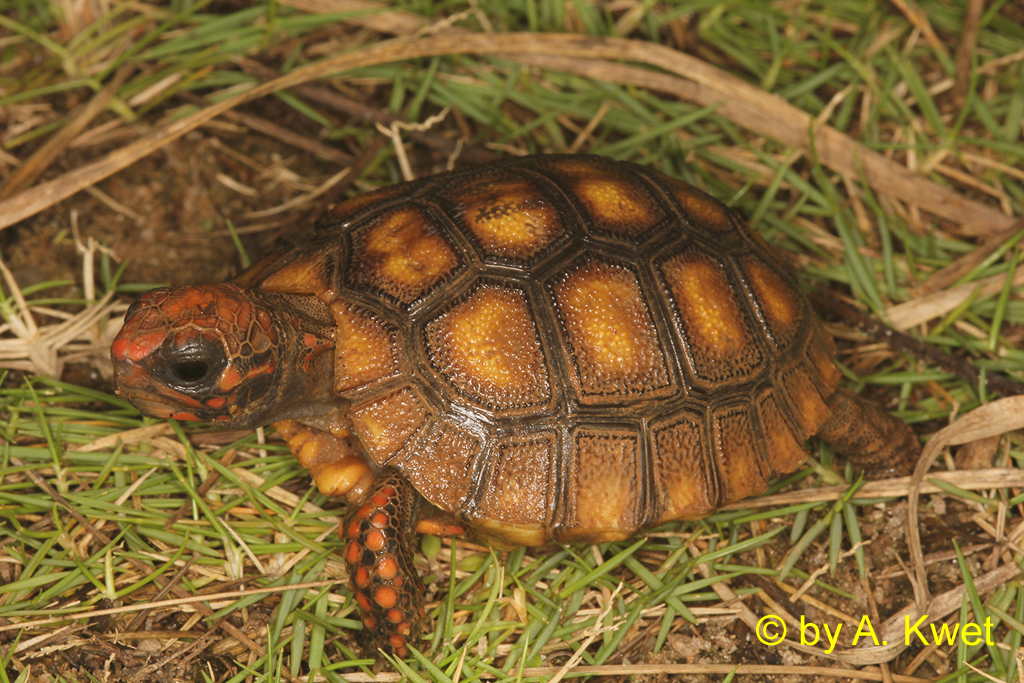 The obligatory photo documentation often does not help, because the breeder animals might be obtained from countries which do not accept this kind of documentation and where transponders are required for tortoise identification instead. Unfortunately, the transponders are inacceptable for small tortoises, and they are not 100% forgery-proof.
The obligatory photo documentation often does not help, because the breeder animals might be obtained from countries which do not accept this kind of documentation and where transponders are required for tortoise identification instead. Unfortunately, the transponders are inacceptable for small tortoises, and they are not 100% forgery-proof.
It therefore seems desirable to use small samples of tissue to determine where the tortoise had lived and what it had eaten by analyzing the isotope pattern. With this analysis method it is possible to find out the geographic origin of an ivory sample for instance, and perhaps this method will work for tortoises, too. Of course this sampling must not do any harm to the animal, but it seems possible to use very small shavings of keratin from the carapace of the tortoises for this analysis. The isotope pattern would show whether the tortoise has eaten wild plants from a certain geographic location during the last years, or whether it had been living in captivity for a long time, and perhaps even, how long it had been living there.
To calibrate this method for tortoises, the World Wild Fund for Nature (WWF) Germany and the DGHT have set up a project which will analyze keratin samples from tortoises from a small, well-studied, wild population, and samples from the breeding group for this local form with a constant feeding regime and record keeping on every animal for several years. This project is still developing, and we will inform you on the progress on our internet page https://www.dght.de/startseite
On-site captive breeding project for the Coahuila Box turtle
The famous Coahuila Box turtles lives in Mexico, in the state of Coahuila, in a valley in the middle of the desert, where spring-fed pools form unique aquatic habitats. This Cuatro Ciénegas Basin is highly endangered due to agricultural development. 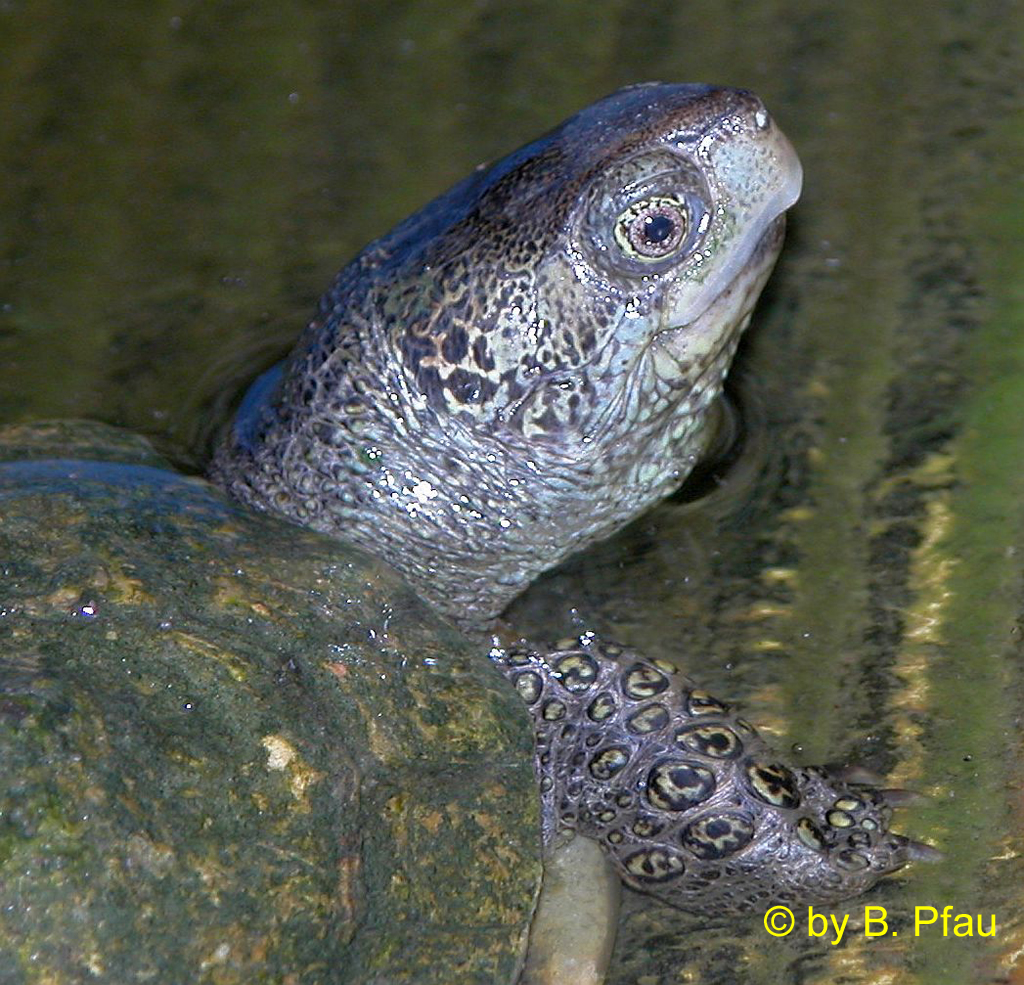 The land surrounding the Protected Area has been largely converted to crop production for the cattle industry. Canals and pumping for irrigation have lowered the water table, and the shallow depth of the springs and their distance from other water sources leaves them at severe risk of drying up in coming years.
The land surrounding the Protected Area has been largely converted to crop production for the cattle industry. Canals and pumping for irrigation have lowered the water table, and the shallow depth of the springs and their distance from other water sources leaves them at severe risk of drying up in coming years.
The chairman of the IUCN Tortoise and Freshwater Turtle Specialist Group, Craig Stanford, has set up a project, where Mexican students of Biology will work, together with specialists from the University of Southern California, on a survey and assessment of all remaining wetland habitat, in order to establish locations in which conservation efforts should be prioritized. The Coahuila Box turtles have suffered a 85% drop in the population over a 40 year period, and an on-site captive breeding facility near the town of Cuatro Ciénegas has been projected, in order to produce hatchlings and head start them before releasing them to augment the declining wild population. The breeding group will be built up from donated animals from zoos and captive collections around the world, because this species is reproducing quite well in captivity. The DGHT compiles and contributes the know-how of the experienced breeders and veterinarians among our members, and we also coordinate the donations of breeder animals from Europe for this project.
You will find more information on this project mainly in the Radiata, the journal of the German Chelonia Group, see https://schildkroeten.dght.de/radiata.html and from time to time also in the news section on www.dght.de.
